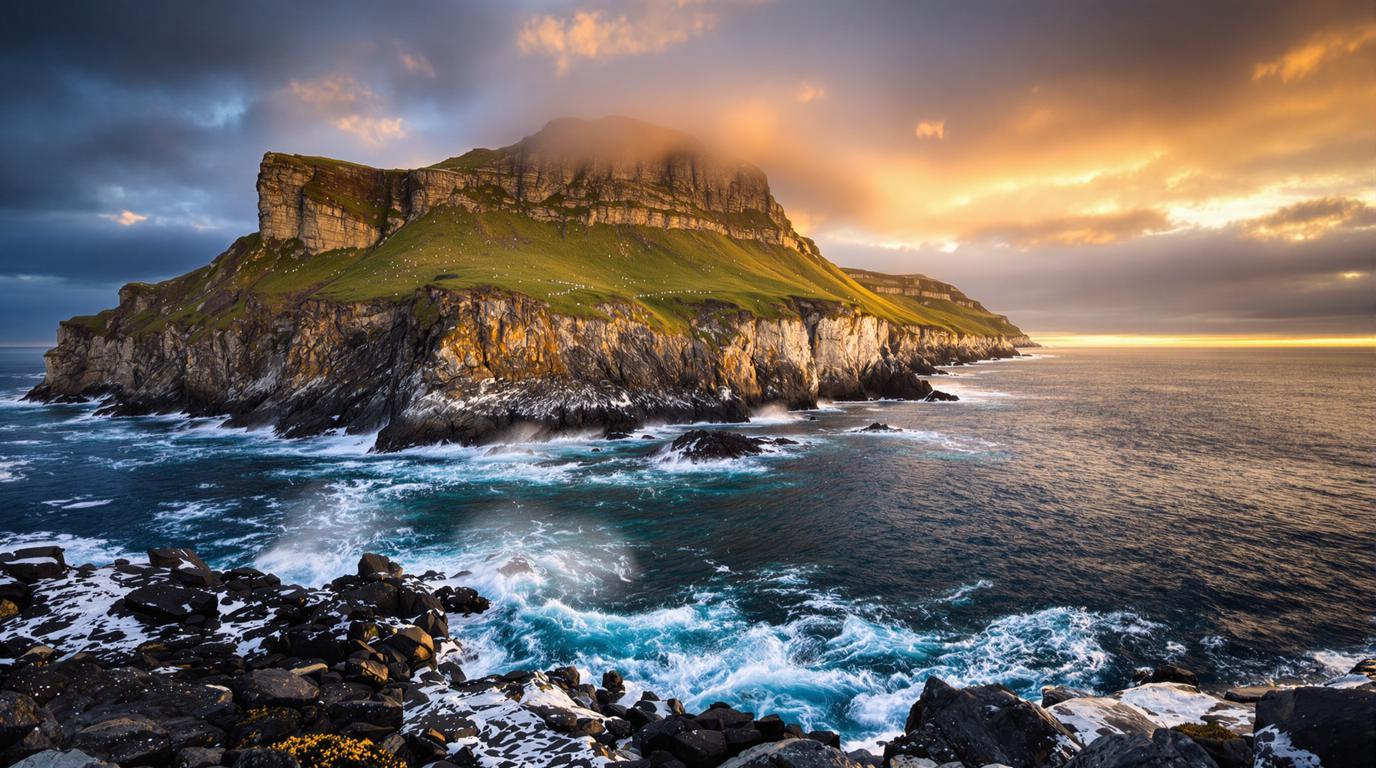The ferry rattles against the harbor as I step onto Canna’s wooden pier, where silence immediately envelops me like a wool blanket. No cars, no traffic lights—just the piercing calls of thousands of seabirds circling dramatic cliffs that plunge into crystalline waters. This westernmost gem of Scotland’s Small Isles harbors secrets that few travelers discover, standing defiant against the modern world’s constant connectivity.
Where time stands still in Scotland’s forgotten paradise
Nestled within the Inner Hebrides, Canna represents a rare conservation triumph. Since 1981, the National Trust for Scotland has protected this 4.3-square-mile sanctuary, home to merely 15 year-round residents who maintain centuries-old crofting traditions. While neighboring Scottish islands experiment with community ownership models, Canna preserves its heritage through careful stewardship.
“We’re not just preserving land, but a way of living that’s vanishing everywhere else,” explains Maggie, who runs the community shop with its endearing honor payment system. “Visitors who take time to understand our rhythm often leave changed.”
Archaeological remnants dating to 5000 BC whisper stories of ancient inhabitants, creating an unbroken human timeline that feels palpable as you traverse its windswept paths.
Discovering Canna’s soul beyond the guidebooks
The mysterious pull of Compass Hill
My hiking boots sink into spongy heather as I climb toward Compass Hill’s summit. This isn’t just any viewpoint—the iron-rich basalt literally confuses compasses, creating a natural phenomenon that feels magical. At the peak, the entire archipelago reveals itself: Rum’s dramatic peaks, Eigg’s distinctive profile, and on clear days, even the misty outline of the Outer Hebrides.
The descent leads through untouched meadows where Highland cattle graze unbothered. Unlike Scotland’s more trafficked islands, here you’ll likely be the only human for miles.
Twilight at the Punishment Stone
Near a bend in the coastal path stands a peculiar stone with a hole. Centuries ago, islanders would chain wrongdoers here, exposing them to elements and public shame. As sunset paints the Atlantic gold, I rest my hand against its weathered surface, feeling a visceral connection to centuries of island justice. The stone’s positioning creates a natural frame for photographing the dramatically colored sky.
Savoring island flavors in Scotland’s remotest kitchen
Inside the unassuming wooden structure of Café Canna, Chef Aiden transforms the morning’s catch into culinary poetry. His hand-dived scallops—seared golden but translucent within—arrive nestled against black pudding crumble and foraged sea herbs that burst with oceanic salinity.
“Everything you taste was swimming, growing or grazing on Canna this morning,” Aiden explains, sliding a plate of island-raised lamb before me. The café’s operating hours follow island rhythms rather than tourist expectations—another reminder that here, nature dictates the schedule, not convenience.
Planning your escape to Scotland’s wild edge
Timing your journey
Ferries from Mallaig run six times weekly during summer (March-October) but reduce to three in winter. April-June offers optimal wildlife viewing when approximately 20,000 seabirds, including adorable puffins, establish breeding colonies on the cliffs.
Where to rest your head
Canna Campsite provides eco-pods for those seeking minimal comfort, while the island’s bunkhouse offers weather-protected simplicity. Both require advance booking as capacity is severely limited—this isn’t a place for spontaneous overnight decisions.
Unlike other remote islands with strict visitor quotas, Canna manages tourism naturally through limited accommodations and ferry schedules, preventing overtourism while preserving authenticity.
Carrying Canna’s whispers back to reality
As my ferry pulls away, I watch Canna shrink against the horizon. The island’s gift isn’t spectacular monuments or luxury experiences, but rather profound disconnection from modern noise. Here, surrounded by nothing but Atlantic winds and ancient stones, you rediscover what silence truly sounds like—perhaps the most precious souvenir in our overcrowded world.
